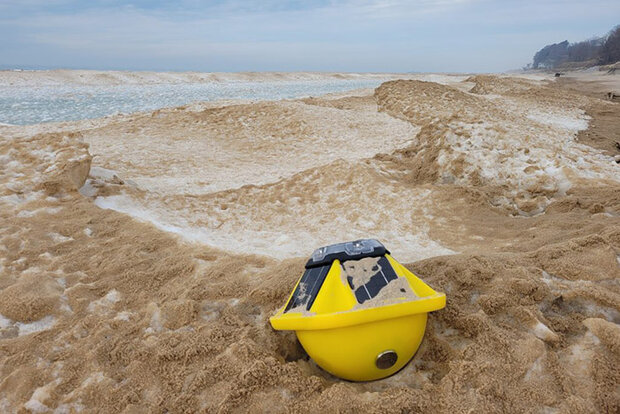Robots give NOAA a peek under the ice of the Great Lakes

New winter-ready buoy on the ice, surrounded by sand from the shore of Lake Michigan Credit: NOAA/Russ Miller
For a long time now, scientists have wanted to know more about what happens under the ice of the Great Lakes each winter, but getting the data has always been extremely challenging or almost impossible in this region. Most buoys must be pulled out and carefully stored away in winter to avoid damage, most research ships are not built to break through the frozen water surface, and older precision instruments were not able to operate at low temperatures. But over the last few years, NOAA’s Great Lakes Environmental Research Laboratory has been working to develop new tools that may provide a fresh glimpse into the season.
“These new tools, built with some of our industry partners, may finally help us close the knowledge gap about winter,” said Steve Ruberg, who leads NOAA’s Meteorological Real-Time Coastal Observation Network. “Information about the biological processes happening in the cold season may help us better understand some of our most important fisheries and prepare for summer events such as harmful algal blooms.”